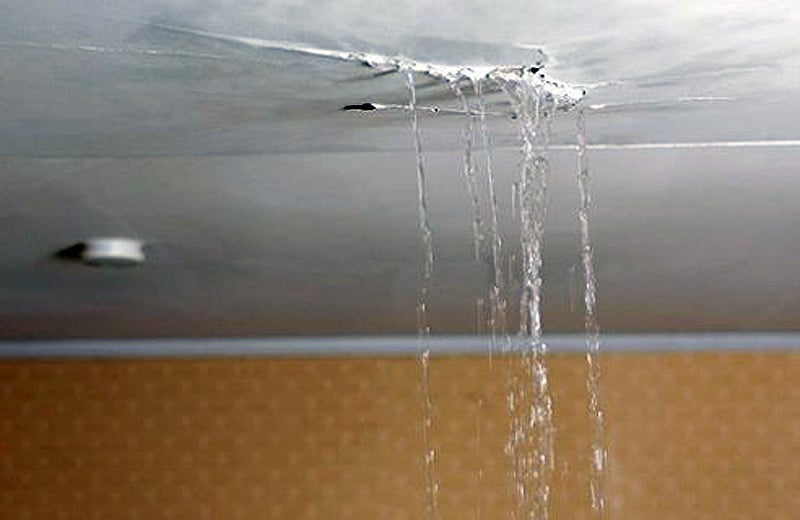Exposing the Primary Sources of Leakage Inside The House
Exposing the Primary Sources of Leakage Inside The House
Blog Article
We have uncovered this post involving How to detect water leaks in your home directly below on the internet and think it made perfect sense to write about it with you on this page.

Leaks not just cause waste of water however can also trigger unneeded damages to your residence and promote undesirable natural development. Water leakages may go unnoticed considering that most of the pipework in our house is hidden. By looking and recognizing for everyday situations that cause leakages, you can safeguard your house from future leakages and unneeded damages. Today, we will take a look at six leakage triggers that may be creating your pipes to trickle.
Immediate temperature level adjustments.
Extreme temperature changes in our pipes can trigger them to broaden as well as acquire all of a sudden. This development and also tightening might trigger fractures in the pipes, particularly if the temperature are below freezing. It would be best if you kept an eye on how your plumbing functions. The visibility of the formerly pointed out scenarios often indicates a high threat.
Rusty water systems
As time goes by, your plumbing system ages as well as corrosion such as corrosion might start gnawing the pipes. This could be the reason for staining or warping on your water pipes. This calls for an inspection with your plumber instantly. If our plumbing system is old, think about replacing the pipes considering that they go to a higher risk of corrosion than the more recent models.
Faulty Pipe Joints
Pipeline joints can degrade over time, resulting in water leaks. If you have noisy pipelines that make ticking or banging noises, specifically when the warm water is turned on, your pipe joints are most likely under a lot of pressure.
Intruding origins
Most water leakages start outside the residence rather than inside it. You may notice wet patches or sinkholes in your backyard, and also that could suggest that tree origins are attacking water lines triggering water to seep out.
Poor Water Connectors
At times, a leak can be triggered by loose pipes as well as pipelines that supply your home appliances. In situation of a water connections leak, you might observe water running directly from the supply line or puddles around your devices.
Blocked Drains
Clogged drains pipes may be aggravating as well as inconveniencing, but they can occasionally end up causing an overflow causing burst pipelines. Keep eliminating any materials that might go down your drains pipes that could block them to stay clear of such hassles.
All the above are sources of leakages however not all water leakages arise from plumbing leaks; some leaks may originate from roofing system leakages. All leakages should be repaired right away to avoid water damages.
Leaks not only create waste of water however can additionally cause unneeded damage to your house and also promote undesirable natural growth. By looking as well as recognizing for everyday circumstances that trigger leakages, you can protect your house from future leakages and also unnecessary damages. Today, we will look at 6 leak triggers that might be causing your pipelines to drip.
At times, a leakage can be caused by loose pipes and pipelines that supply your devices. In situation of a water connections leakage, you may see water running directly from the supply line or pools around your home appliances.
How To Check For Water Leak In Your Home
How To Check for Leaks
The average household's leaks can account for nearly 10,000 gallons of water wasted every year and ten percent of homes have leaks that waste 90 gallons or more per day. Common types of leaks found in the home are worn toilet flappers, dripping faucets, and other leaking valves. These types of leaks are often easy to fix, requiring only a few tools and hardware that can pay for themselves in water savings. Fixing easily corrected household water leaks can save homeowners about 10 percent on their water bills.
To check for leaks in your home, you first need to determine whether you're wasting water and then identify the source of the leak. Here are some tips for finding leaks:
Take a look at your water usage during a colder month, such as January or February. If a family of four exceeds 12,000 gallons per month, there are serious leaks.
Check your water meter before and after a two-hour period when no water is being used. If the meter changes at all, you probably have a leak.
Identify toilet leaks by placing a drop of food coloring in the toilet tank. If any color shows up in the bowl after 10 minutes, you have a leak. (Be sure to flush immediately after the experiment to avoid staining the tank.)
Examine faucet gaskets and pipe fittings for any water on the outside of the pipe to check for surface leaks.
Undetected water leaks can happen without the home or business owner even realizing. If you suspect a water leak, but not able to find the source. It is time to contact a professional water leak detection service, The Leak Doctor.
How To Find a Water Leak In Your Home
https://www.leakdoctor.com/blog/How-To-Check-For-Water-Leak-In-Your-Home_AE197.html

I stumbled upon that entry on Top Causes of Home Water Leaks when doing a lookup on the web. Sharing is caring. One never knows, you will be doing someone a favor. I enjoy reading our article about How to Find Water Leaks.
Go Company Report this page